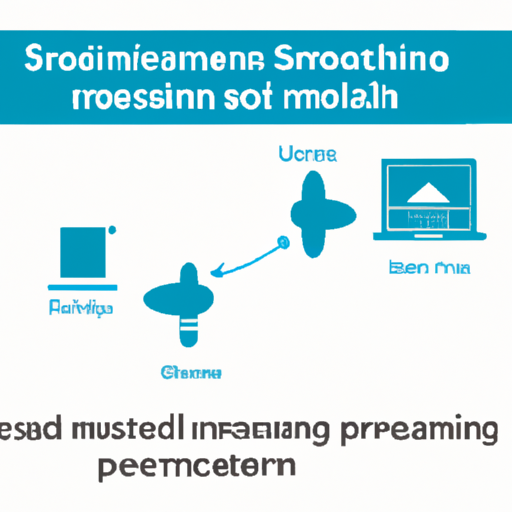Sensor technology has become an integral part of our daily lives, from the sensors in our smartphones that enable touchscreens to the sensors in our cars that help us park safely. These devices are essential for collecting data and providing feedback in a wide range of applications, from consumer electronics to industrial automation. In this article, we will explore the mainstream sensor production process, from the initial design phase to the final testing and packaging.

The next step in sensor production is the fabrication of the sensor components. This typically involves the use of specialized materials and processes to create the sensor elements, such as the sensing element, signal conditioning circuitry, and packaging. For example, in the case of a temperature sensor, the sensing element may be made of a material that changes resistance with temperature, such as a thermistor or a platinum RTD (resistance temperature detector). The signal conditioning circuitry is then added to convert the resistance change into a measurable output signal, such as voltage or current.
Once the sensor components are fabricated, they are assembled into a complete sensor device. This involves mounting the sensing element onto a substrate, connecting it to the signal conditioning circuitry, and encapsulating the entire assembly in a protective housing. The assembly process may involve a combination of automated machinery and manual labor, depending on the complexity of the sensor design and the volume of production.
After the sensor device is assembled, it undergoes a series of tests to ensure that it meets the specified performance criteria. This typically involves testing the sensor's sensitivity, accuracy, and response time under various operating conditions, such as temperature, humidity, and vibration. Any sensors that fail to meet the required specifications are rejected and either repaired or discarded.
Once the sensors have passed the testing phase, they are ready for packaging. This involves placing the sensors in a protective housing that shields them from environmental factors, such as moisture, dust, and mechanical shock. The packaging also includes the necessary electrical connections, such as wires or connectors, to interface the sensor with the external system.
Finally, the packaged sensors are ready for distribution to customers. This may involve shipping the sensors to manufacturers who incorporate them into their products, such as smartphones, cars, or industrial equipment. Alternatively, the sensors may be sold directly to end-users for use in DIY projects or research applications.
In conclusion, the mainstream sensor production process involves a series of steps, from the initial design phase to the final testing and packaging. This process requires a combination of engineering expertise, specialized materials, and manufacturing techniques to create sensors that meet the specific requirements of a wide range of applications. As sensor technology continues to advance, the production process will likely evolve to incorporate new materials, processes, and testing methods to meet the growing demand for sensors in our increasingly connected world.
Sensor technology has become an integral part of our daily lives, from the sensors in our smartphones that enable touchscreens to the sensors in our cars that help us park safely. These devices are essential for collecting data and providing feedback in a wide range of applications, from consumer electronics to industrial automation. In this article, we will explore the mainstream sensor production process, from the initial design phase to the final testing and packaging.

The next step in sensor production is the fabrication of the sensor components. This typically involves the use of specialized materials and processes to create the sensor elements, such as the sensing element, signal conditioning circuitry, and packaging. For example, in the case of a temperature sensor, the sensing element may be made of a material that changes resistance with temperature, such as a thermistor or a platinum RTD (resistance temperature detector). The signal conditioning circuitry is then added to convert the resistance change into a measurable output signal, such as voltage or current.
Once the sensor components are fabricated, they are assembled into a complete sensor device. This involves mounting the sensing element onto a substrate, connecting it to the signal conditioning circuitry, and encapsulating the entire assembly in a protective housing. The assembly process may involve a combination of automated machinery and manual labor, depending on the complexity of the sensor design and the volume of production.
After the sensor device is assembled, it undergoes a series of tests to ensure that it meets the specified performance criteria. This typically involves testing the sensor's sensitivity, accuracy, and response time under various operating conditions, such as temperature, humidity, and vibration. Any sensors that fail to meet the required specifications are rejected and either repaired or discarded.
Once the sensors have passed the testing phase, they are ready for packaging. This involves placing the sensors in a protective housing that shields them from environmental factors, such as moisture, dust, and mechanical shock. The packaging also includes the necessary electrical connections, such as wires or connectors, to interface the sensor with the external system.
Finally, the packaged sensors are ready for distribution to customers. This may involve shipping the sensors to manufacturers who incorporate them into their products, such as smartphones, cars, or industrial equipment. Alternatively, the sensors may be sold directly to end-users for use in DIY projects or research applications.
In conclusion, the mainstream sensor production process involves a series of steps, from the initial design phase to the final testing and packaging. This process requires a combination of engineering expertise, specialized materials, and manufacturing techniques to create sensors that meet the specific requirements of a wide range of applications. As sensor technology continues to advance, the production process will likely evolve to incorporate new materials, processes, and testing methods to meet the growing demand for sensors in our increasingly connected world.